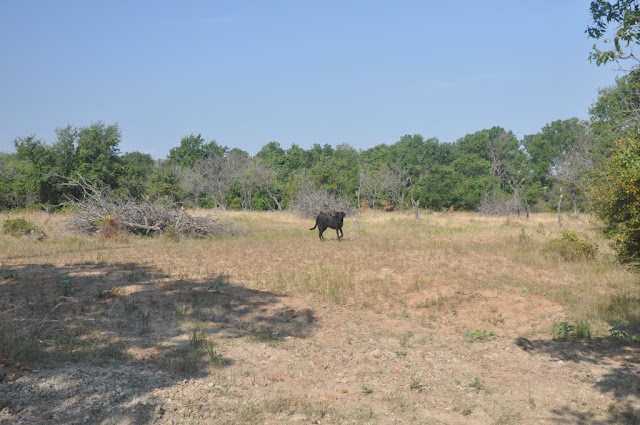One animal that I have no trouble photographing is the Texas harvester ant. They are easy to find at several locations on the farm. We were told by someone "in the know" that it is a very good sign of a healthy environment if you have the harvester ant. We probably have 7 or 8 mounds in 3 different locations.
Unfortunately, they are kind of small for pictures. If you look for the reddish spot, you can see a bunch together.
The harvester ants are a favorite menu item for the Texas Horned Lizard. Unfortunately, the horned lizard is endangered and I haven't seen any in the area of our farm. In addition, the harvester ant is what you get sent when you have an ant farm.
Though the mounds really have very little height to them, they can be five to ten feet across. The ants clear all of the plant products in every direction to create large circular open spaces.
The harvester ant gets its name because it harvests a variety of small seeds from grasses and plants.
If you look closely above (I know it is hard), you will see the yellowish hulls they've removed from the seeds before they store them. They will also eat small insects.
They mate after rainy days and the males die. The females fly off, shed their wings, and begin new colonies by digging a burrow and laying eggs. These ants eventually become worker ants, which care for other developing ants, build the nest, and forage for food. There are reports that a single queen can live and reproduce for as long as 30 years in nature.
The harvester can be aggressive when messed with. Their sting hurts and some people have allergic reactions when stung.
I like this ant as it is beneficial to the environment. However, too many mounds are not good as is true of any thing.























































